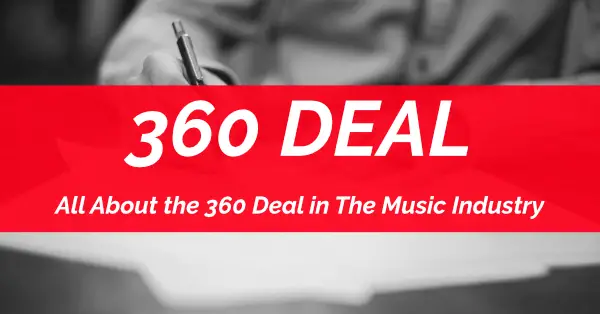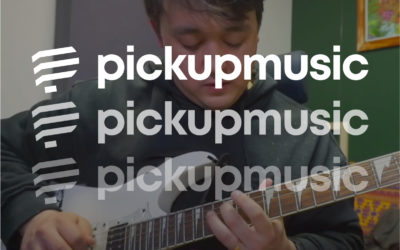You’re an independent artist and a record label comes up to you with a contact, a 360 deal also known as a multi-rights contract. What would you do?
I hope to give you the information you need to help you with that decision if it ever happens to you.
What is a 360 deal? It is a contract between a record label and an artist where the record label takes a share of the revenue from each of the artist’s revenue streams. In return, the artist might receive advances, and receive financial support with marketing and touring, depending on the contract. With a 360 deal, record labels are able to take a percentage of revenue from:
- Record Sales (obviously)
- Publishing
- Endorsement Deals
- Merchandise Sales
- Touring and Concert Revenue
- Streaming
How Exactly Does a 360 Deal Work?
Not all 360 deals are made the same. It will really depend on your contract and how well it id negotiated between you, the artist, and the record company.
But you are probably wondering about some of the details of when 360 deals started to become the record label standard contract how exactly they work.
History: Before And After the 360 Deal
In the past, under a traditional record deal, the recording company did not take a share of any income other than the revenue from record sales and other uses of the recording.
Because of that, artists were able to make a good living off of their performance royalties, merchandise sales, and touring/concerts. The recording couldn’t touch those income streams – until the advent of the 360 deal.
Everyone knows from the late 90’s record companies have been hurting because of the advent file sharing and downloading music, and even now, streaming. Since people were no longer buying music as much and preferred to download a single than buy an entire album on a CD, or now simply stream it, the record labels needed a new method to make income.
In comes the 360 deal.
According to Wikipedia, one of the first 360 deals was with the band Paramore back in 2005, but before that, there were similar 360 deals between artists and promoters in the concert promotion business.
The 360 deal, or multi-rights, deal has become a controversial topic in the music industry for many reasons. Many artists see it as a money grab by from record labels with a dying business model. However, on the other hand, record labels see it as a way to have a longer relationship that they might be able to nurture even if the album sales are a commercial failure. In the past, if your debut album was a failure, you could pretty much guarantee that your record contract was going to be shelved.
But since the record label has more income streams from a single artist, they believe it enables them to invest more time and energy into artists when they normally wouldn’t with a traditional contract.
Is a 360 deal Good? The Pros and Cons
Music Artists are very skeptical of 360 deals and most vehemently disagree with the concept of a 360 deal. Record labels see it as the future of doing business.
It doesn’t really seem like there is a middle ground about whether or not a 360 deal is good for you as a professional musician.
Pros Of a 360 Deal
- More commitment to promote and develop opportunities
You may have heard of artist development deals. This is where the record label invests in the artist and develops an artist’s brand and basically acts as a manager. With the advent of the 360 deal, record labels have more opportunities to do this kind of investment with emerging artists.
So even if you are still working on building or finding an audience and your first album isn’t quite a commercial success, the record label might organize to put you on tour so that you can build fans, or more importantly to them, recoup their investment. Situations like this could actually end up being a win-win for you, the artist, and the record label. This can be the foundation to a mutually beneficial relationship where the more you make as an artist, the more the record label makes.
- Financial support
For independent artists, it can be expensive and difficult to organize promotion if you are a one-man show. As a independent artist, you will have to plan and finance buying merch for touring, touring expenses, and all other expensive for marketing – on top of that pay your team if you have a booking agent and manager.
This is where the 360 deal seems so attractive to new and emerging artists. The record label may give you an advance, help with promotion, and even manage your merch – but as with taxes, there are going to take their pound of flesh.
Industry Contacts
Cons Of a 360 Deal
When record labels sign new and emerging artist, they are taking a large risk on their investment. Generally, only 1 in 20 artists are commercially successful. So the record labels are going to want to get something in return of taking on this risk and it really depends on the contact that is offered, but it could be creative control or financial. Here are a few examples of the cons
- Lack of Creative Control
- The contract can be shelved
How to Negotiate a 360 Deal
My first piece of advice when you are working on a 360 deal would be to take it to an entertainment lawyer, he will have the experience to make sense of the contract wording and find any issues that might be hidden.
You’ll first want to verify what income and what percentage they will take. Generally, the label will take 20% to 35% of a particular income stream. But is has been as high as 50% in some cases.
If the record label is taking that much of a percentage, it is best for the artist to try and get them to be active on helping generate income. For example, if the label gets 35% of merchandise sales, you should try to get them to manage merchandise logistics or help you find a deal on ordering merch. Try to work out a give-and-take for each revenue stream.
Here are some terms to watch out for in a 360 deal contract:
- Approval Rights: This means they can get the final say on such things as touring schedule, setlist, choosing your booking agent, and setting salaries for tour crew. That’s even covering the creative control they will have over your album.
- Cross-Collateralization: This lets the label reimburse itself for the cost of recording from all sources of income, not just record and streaming income.
- Participation Period: This is the amount of time the record label will be allowed to share in the artist’s income not related to the sale or streaming of the song/album.
Related Questions
What artists are in a 360 deal?
There are many major artists and well-known names that are in a 360 deal.
- Migos
- Paramore
Conclusion
I feel like 360 deals are always going to be controversial simply because of the nature of the deal. The record label is always going to want to make as much money and the artist going to want to keep as much money. Furthermore, the contract is usually leaning towards the favor of the label, unless the artist has some sort of clout.
For some artists, signing a 360 deal could be the best option for their career at the time, especially in the pop and hip-hop game, both of which require a lot of promotion to break through the noise.
For most people, this information is mainly educational because not everyone is getting signed to 360 deals every day, but if you do get offered a 360 deal, make sure you get an experienced entertainment lawyer to help you understand the contact’s clauses.
References:
- Bart Day Law: 360 Deals – What Are They And How Will They Affect You





0 Comments